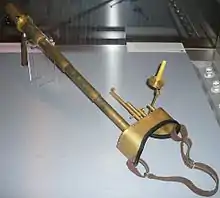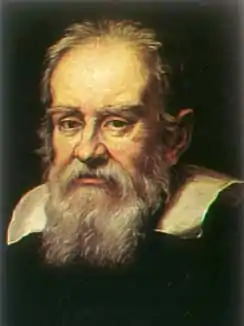Celatone
The celatone was a device invented by Galileo Galilei to observe Jupiter's moons with the purpose of finding longitude on Earth. It took the form of a piece of headgear with a telescope taking the place of an eyehole.
_IF_102793.jpg.webp)
Using of celatone.

Celatone by Matthew Dockrey. Museum at the Royal Observatory, Greenwich, UK.
Modern versions
In 2013, Matthew Dockrey created a replica celatone, using notes from a version created by Samuel Parlour. From April 2014 to January 2015, Dockrey's celatone was on display in the Greenwich Observatory in Greenwich, London.
See also
References
- Sobel, Dava (1995). Longitude: The True Story of a Lone Genius Who Solved the Greatest Scientific Problem of His Time. Penguin. ISBN 0-14-025879-5.
External links
This article is issued from Wikipedia. The text is licensed under Creative Commons - Attribution - Sharealike. Additional terms may apply for the media files.

